Illuminate Your Space: The Ultimate Guide to Energy Efficient Lighting

Lighting plays a crucial role in our daily lives, but it’s also one of the largest energy consumers globally. With lighting accounting for 20% of the world’s energy consumption and 6% of CO2 emissions, switching to energy-efficient lighting isn’t just a cost-saving measure—it’s an environmental imperative. This guide will help you navigate the world of energy-efficient lighting, offering insights on its benefits, types, and how to implement it in your home or business.
What Are Energy Efficient Lights?
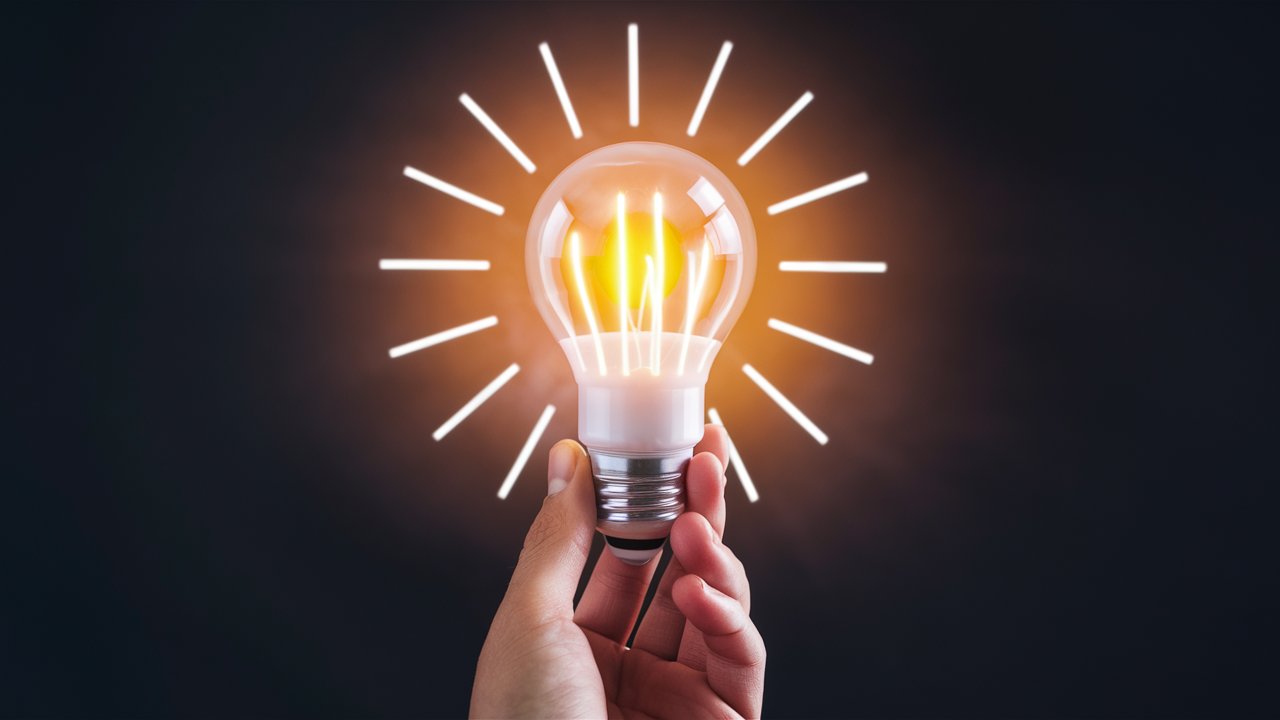
Energy-efficient lights reduce energy usage without compromising on brightness or quality. These lights, including energy-efficient ceiling lights and fixtures, consume less energy while maintaining the same lumen output as traditional lights. Understanding that energy consumption does not equate to brightness quality is key when considering energy-efficient options (Gov. uk).
Energy-efficient lighting can be implemented in several ways:
- Re-lamping: Replace old incandescent bulbs with energy-efficient LEDs or fluorescent light bulbs (Energy Saving Trust).
- Lighting Controls: Advanced controls, such as motion sensors and automatic timers, are used to manage light usage efficiently (Environmental Protection Agency).
- Structural Integrity: Energy-efficient lights have better circuitry, reduce electricity wastage and often include features like dimmer switches (National Grid).
How Do Energy Efficient Lights Work?
Energy-efficient light bulbs, such as LEDs and CFLs, use significantly less electricity than traditional bulbs to produce similar lighting levels. Here’s a closer look at the two most common types:
- LED Lights: LED (Light Emitting Diode) lights are known for their energy efficiency and long lifespan. Modern LEDs are even more efficient than older models, using grouped clusters and diffuser lenses to provide wide applications in homes and businesses (Energy.gov).
- CFLs: Compact Fluorescent Lights are another popular energy-efficient option, particularly in commercial settings. CFLs use a small amount of mercury vapour to create ultraviolet light, producing visible light through a fluorescent coating (The Guardian).
Watch the video below to learn about energy efficient lighting!
The Importance of Energy Efficient Lights
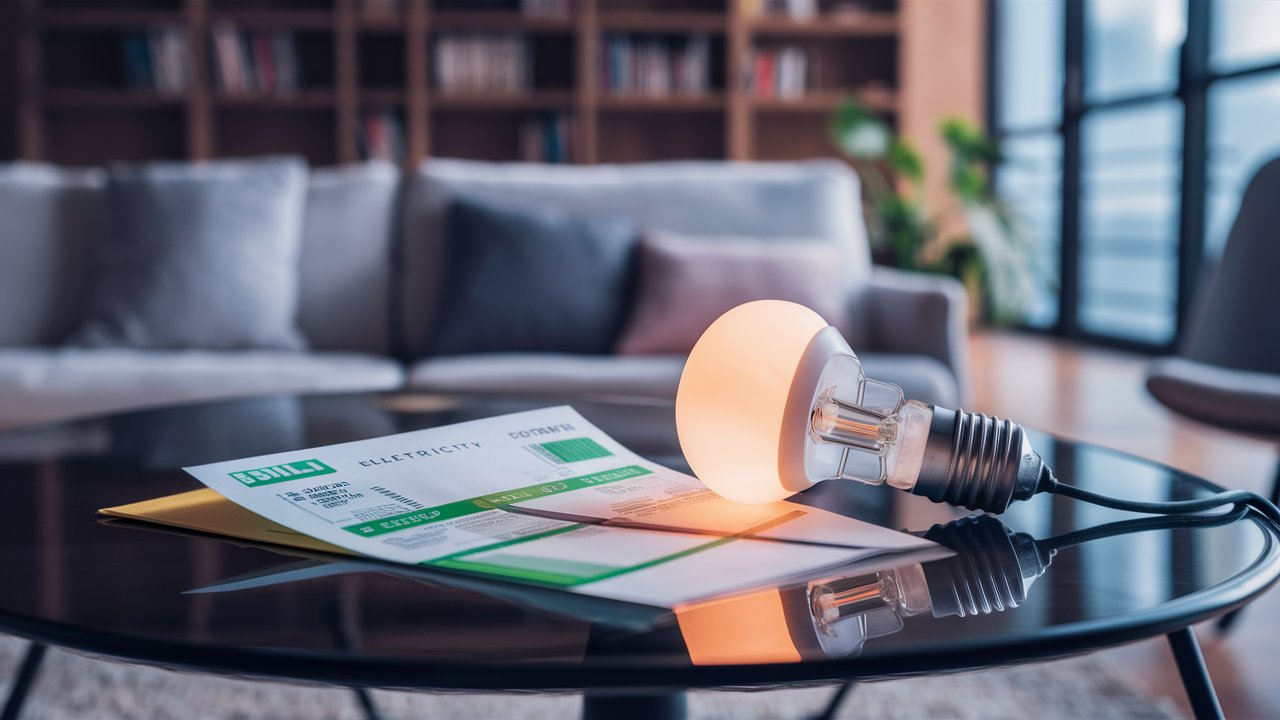
Energy-efficient lighting is not just a trend; it's a smart, impactful choice for both your wallet and the planet. Here's why making the switch is essential:
- Slash Your Electricity Bills: Imagine cutting down your monthly energy costs significantly. Energy-efficient lights consume far less electricity than traditional bulbs, translating to substantial savings over time (UK Energy Research Centre).
- Maximise Efficiency, Minimize Waste: Traditional lighting methods waste a lot of energy, but with energy-efficient lighting, almost all the electricity used is converted into light. This means you get the brightness you need without the excessive waste (Energy Star).
- Champion Environmental Protection: By reducing your carbon footprint, you're playing a crucial role in combating climate change. Energy-efficient lighting significantly lowers greenhouse gas emissions, helping to protect our environment for future generations (Carbon Trust).
Investing in energy-efficient lights is a win-win situation: you save money and contribute to a healthier planet. Make the switch today and experience the difference.
A Brief History of Light Fixtures
Understanding the evolution of light fixtures helps us appreciate the advancements in energy-efficient lighting.
- Incandescent Bulbs: Invented over 100 years ago, these bulbs are highly inefficient, converting only 10% of electricity into visible light (Smithsonian Institution).
- Halogen Bulbs: Slightly more efficient than incandescent bulbs, halogens shine brighter because they use a mixture of halogen gas and tungsten vapour.
- CFLs: The first bulbs designed specifically for energy efficiency, using 70-80% less electricity than incandescent bulbs (BBC).
- LEDs: The most energy-efficient lights, using 90% less energy than incandescent bulbs of similar brightness (CNET).
Comparison of Savings: LEDs vs. Other Bulbs
Let’s look at the energy and cost savings offered by LEDs compared to other types of bulbs.
|
Type of Bulb |
Average Lifespan |
Energy Consumption |
Annual Cost (per bulb) |
Annual Savings with LED |
|
Incandescent |
1,200 hours |
60W |
£8.00 |
£6.75 |
|
Halogen |
2,000 hours |
42W |
£5.60 |
£4.35 |
|
CFL (Compact Fluorescent) |
8,000 hours |
14W |
£1.90 |
£0.65 |
|
LED (Light Emitting Diode) |
25,000 hours |
8W |
£1.25 |
N/A |
*Calculations based on average UK electricity cost of £0.15 per kWh and 1,000 hours of use per year.
Putting It All Together:
- Incandescent bulbs are the least efficient, converting only 10% of electricity into light.
- Halogen bulbs are slightly more efficient but still consume significantly more energy than LEDs.
- CFLs are a step up, using 70-80% less energy than incandescent bulbs.
- LEDs are the most efficient, offering the longest lifespan and the highest savings on energy costs.
Switching to energy-efficient lighting like LEDs reduces your energy bills and minimises your environmental impact. Investing in LED lighting is a smart and sustainable choice for both residential and commercial spaces.
Government and Utility Incentives for Energy-Efficient Lighting

In both the UK and Ireland, there are various incentives and schemes aimed at promoting energy efficiency, particularly through the installation of energy-efficient lighting. Taking advantage of these programs not only helps reduce energy consumption but also provides financial benefits to businesses and homeowners.
United Kingdom
Energy Savings Opportunity Scheme (ESOS)
ESOS is a mandatory energy assessment scheme for large organisations in the UK. It encourages businesses to identify energy-saving opportunities, including upgrading to energy-efficient lighting. Compliance with ESOS can lead to significant cost savings through improved energy efficiency (Gov. uk).
Enhanced Capital Allowances (ECAs)
ECAs allow businesses to claim 100% first-year capital allowances on investments in certain energy-saving equipment, including energy-efficient lighting. This tax relief incentive can make upgrading to energy-efficient lighting systems more financially attractive for businesses (Gov. uk).
The Energy Company Obligation (ECO)
ECO is a government energy efficiency scheme in England, Scotland, and Wales. It provides funding for energy-saving improvements in homes, including the installation of energy-efficient lighting, particularly for low-income households. This scheme helps reduce energy bills and improve home comfort (Gov. uk).
Smart Export Guarantee (SEG)
For those considering solar PV installations, SEG ensures payments for excess electricity exported to the grid. By integrating energy-efficient lighting, you can further reduce overall electricity demand, maximising the benefits of your solar PV system.
Ireland
SEAI Better Energy Homes Scheme
Managed by the Sustainable Energy Authority of Ireland (SEAI), this scheme offers grants for energy efficiency improvements, including the installation of energy-efficient lighting. Homeowners can apply for grants to cover part of the cost of these upgrades, making it easier to transition to energy-efficient lighting (SEAI).
SEAI Lighting Upgrades
SEAI provides support for businesses looking to upgrade to energy-efficient lighting through the Lighting Upgrade Scheme. This scheme offers financial incentives and technical support to help businesses reduce their energy consumption and carbon footprint (SEAI).
Accelerated Capital Allowance (ACA) Scheme
ACA allows businesses to write off 100% of the purchase value of qualifying energy-efficient equipment against their profit in the year of purchase. This includes energy-efficient lighting systems and controls, providing a significant financial incentive for businesses to invest in energy-efficient technology (Revenue. ie)
How to Take Advantage of These Incentives
- Check Eligibility
Determine if your business or home qualifies for specific schemes based on location, size, and type of property. - Apply for Grants
Visit the respective government or SEAI websites to learn about available grants and how to apply for them. Some grants may require pre-approval or professional installation. - Consultation
Consider consulting with a qualified energy efficiency advisor or contractor who can assess your current lighting setup and recommend eligible upgrades. - Keep Records
Maintain detailed records of purchases, installations, and any required documentation for tax relief or grant applications.
By leveraging these incentives and schemes, businesses and homeowners in the UK and Ireland can make significant strides towards energy efficiency. Upgrading to energy-efficient lighting not only reduces energy consumption and costs but also contributes to environmental stewardship. Explore the options available and take the next step towards a more energy-efficient future with the support of these government and utility incentives.
How to Implement Energy Efficient Lights
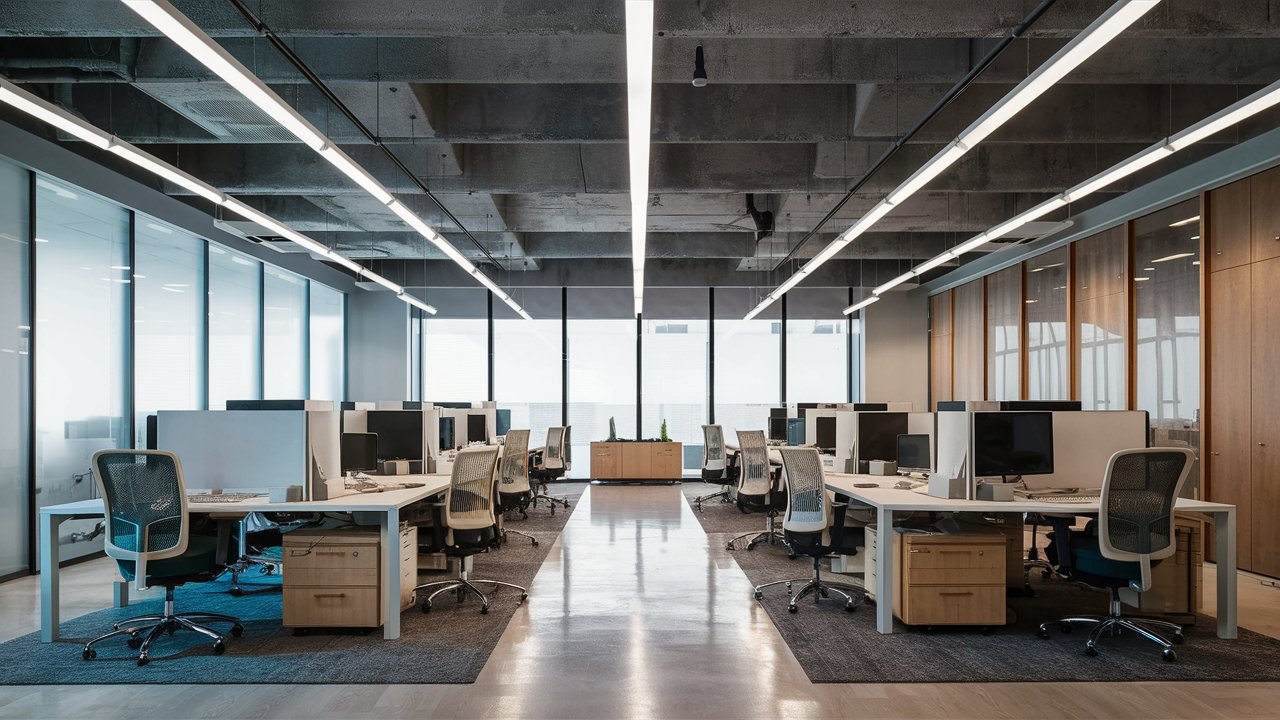
Transforming your space with energy-efficient lighting is easier than you might think. Here are some practical and impactful ways to make the switch:
- Re-lamping: Out with the old, in with the new! Replace traditional incandescent bulbs with CFLs or LEDs. Not only are LEDs more efficient, but they’re also incredibly versatile, fitting into a variety of fixtures and providing excellent light quality (The Telegraph).
- Enhanced Light Controls: Take control of your lighting with advanced solutions like motion sensors, automatic timers, and dimmers. These smart controls ensure your lights are only on when needed, maximising efficiency and reducing unnecessary usage (Which?).
- Upgrade Ballasts and Fixtures: Sometimes, it's the fixtures themselves that need an upgrade. Using efficient ballasts and fixtures can drastically improve light distribution and reduce energy wastage. Look for fixtures that enhance the performance of your energy-efficient bulbs (Popular Mechanics).
By incorporating these changes, you can create a brighter, more efficient space that benefits both your finances and the environment. Start with one or two adjustments and watch the impact grow!
Best Energy Efficient Lights on the Market
If you're ready to brighten your space while saving energy and cutting costs, look no further. Here are some top-notch energy-efficient lighting options available at Meteor Electrical:
Kosnic 9W LED Light Lamp
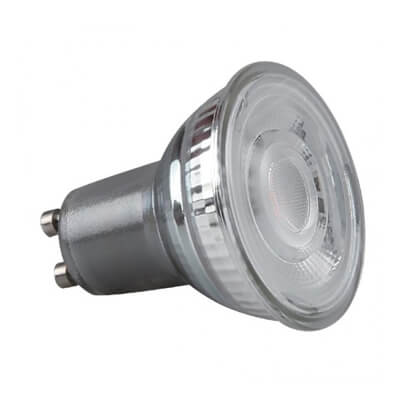
This versatile lamp is perfect for both households and commercial properties. With an impressive lifespan of 20,000 hours, you won't need to worry about frequent replacements. It’s a reliable and efficient choice for any setting.
Kosnic 4.5W LED Lamp

Delivering a robust 390-lumen output, this high-performing lamp is ideal for both home and hospitality environments. Whether you're lighting up a cosy living room or a bustling restaurant, this lamp ensures bright and efficient illumination.
Kosnic 4 Watt Bayonet Candle LED Light
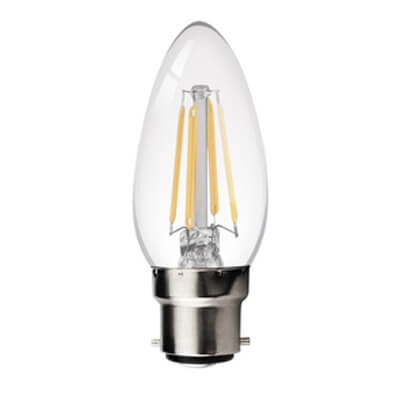
Combining traditional aesthetics with modern efficiency, this candlelight offers 100 lumens per watt and lasts over 20,000 hours. It’s a stylish addition to any space, providing both elegance and energy savings.
Kosnic 26-Watt Compact Fluorescent Lamp
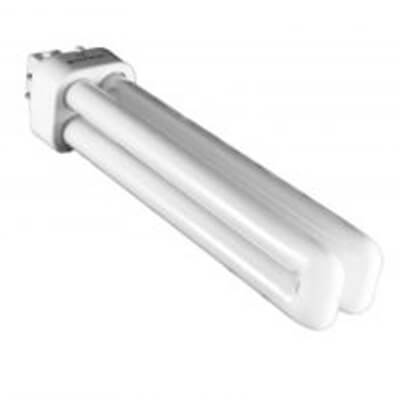
Ideal for larger areas like retail spaces or offices, this powerful lamp provides 1,800 lumens and boasts a lifespan of 12,000 hours. It's designed to deliver consistent, bright light while reducing energy consumption.
Aurora 8-Watt Dimmable LED Smart Lamp
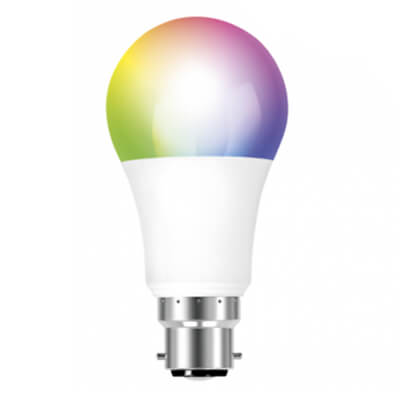
Step into the future with this smart lamp, which features Bluetooth control and offers six RGB colours. With a 25,000-hour lifespan, this lamp not only saves energy but also allows you to customise your lighting experience with ease.
Upgrade to these energy-efficient lighting solutions and enjoy a brighter, more sustainable future.
Conclusion
Switching to energy-efficient lighting is a simple yet powerful way to reduce your energy consumption, lower your electricity bills, and contribute to a healthier planet. From the innovative technology of LEDs to the versatile use of CFLs, energy-efficient lights provide a brilliant solution for both homes and businesses.
By implementing energy-efficient options, such as re-lamping, advanced light controls, and upgrading fixtures, you can significantly enhance your lighting efficiency and performance. With a wide range of top-quality products available, making the transition to energy-efficient lighting has never been easier.
Ready to make the switch? Visit Meteor Electrical today to explore our extensive selection of energy-efficient lighting solutions. Brighten your space, save energy, and invest in a sustainable future with Meteor Electrical.
Want to reduce your energy savings with heating too? Check out our Smart Heaters blog!
FAQ: Energy Efficient Lighting
1. What are energy-efficient lights?
Energy-efficient lights, such as LEDs and CFLs, use less electricity to produce the same amount of light as traditional bulbs. They are designed to reduce energy consumption, lower electricity bills, and decrease carbon emissions.
2. How do LED lights save energy?
LED lights save energy by converting almost all their electricity into light, with minimal energy wasted as heat. This makes them far more efficient than incandescent and halogen bulbs.
3. Are LED lights better than CFLs?
Both LED and CFL lights are more efficient than traditional bulbs, but LEDs are generally more efficient, last longer, and are more versatile. LEDs also reach full brightness instantly, while CFLs may take a moment to warm up.
4. How much can I save by switching to energy-efficient lighting?
Switching to energy-efficient lighting can significantly reduce your electricity bills. On average, households can save about 75% of their lighting energy costs by using LEDs instead of incandescent bulbs.
5. Do energy-efficient lights last longer than traditional bulbs?
Yes, energy-efficient lights like LEDs and CFLs last much longer than traditional incandescent bulbs. LEDs can last up to 25,000 hours or more, while CFLs typically last about 10,000 hours.
6. Are energy-efficient lights environmentally friendly?
Yes, energy-efficient lights help reduce greenhouse gas emissions by consuming less electricity. Additionally, LEDs do not contain hazardous materials like mercury, which is found in CFLs, making them a more environmentally friendly option.
7. Can I use dimmers with energy-efficient lights?
Yes, many energy-efficient lights, especially LEDs, are compatible with dimmer switches. However, it's essential to use dimmable LEDs and ensure your dimmer switch is compatible with LED technology.
8. How do I dispose of old energy-efficient bulbs?
CFLs contain small amounts of mercury and should be disposed of at a recycling facility or a designated drop-off point. LEDs do not contain hazardous materials but should still be recycled to reduce environmental impact.
9. What are the best energy-efficient lighting options for my home?
Some top energy-efficient lighting options include Kosnic 9W LED Light Lamp, Kosnic 4.5W LED Lamp, Kosnic 4 Watt Bayonet Candle LED Light, Kosnic 26 Watt Compact Fluorescent Lamp, and Aurora 8 Watt Dimmable LED Smart Lamp.
10. How can I make my existing lighting more energy-efficient?
You can make your existing lighting more energy-efficient by replacing traditional bulbs with LEDs or CFLs, installing motion sensors and automatic timers, and upgrading to energy-efficient fixtures and ballasts.
For more energy-efficient lighting solutions, visit Meteor Electrical and discover how you can brighten your space while saving energy and money.

